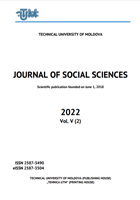THE PHANARIOTE SYSTEM IN MOLDAVIA AND WALLACHIAUNDER THE OTTOMAN RULE
THE PHANARIOTE SYSTEM IN MOLDAVIA AND WALLACHIAUNDER THE OTTOMAN RULE
Author(s): Ömer BedirSubject(s): Diplomatic history, Political history, Social history, The Ottoman Empire
Published by: Universitatea Tehnică a Moldovei
Keywords: Dobruja; Moldavia; Phanariote System; Voivode; Wallachia;
Summary/Abstract: Dobruja, Moldavia and Wallachia remained under the Ottoman sovereignty for more than 400 years. Dobruja was inhabited mostly by Turks and Muslims, and was administered by Muslim-Turkish governors assigned directly from the Sublime Porte. However, Wallachia and Moldavia were inhabited overwhelmingly by Christian-Orthodox people and were governed by local voivodes designated by the Ottoman Sultans. These voivodeships were autonomous entities in their internal affairs but were dependent to the Ottoman State in their foreign affairs. Upon the betrayal of the Moldavian prince during the Pruth River campaign of 1710-1711, the Ottoman authorities were compelled to implement the Phanariote System which lasted until 1821. Following the abolition of the Phanariote System, the Ottoman authorities returned to the previous method of appointing local princes which, in turn, lasted until the independence of modern Romania. Upon the independence of Romania in 1878, the Ottoman Empire had to switch to a new form of relationship with this newborn state. As a result, these two states resumed their relations through diplomatic means and, in its modern sense, the Turkish-Romanian diplomatic relations were established.
Journal: Journal of Social Sciences
- Issue Year: V/2022
- Issue No: 2
- Page Range: 87-98
- Page Count: 12
- Language: English

